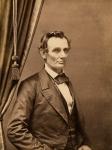COLUMBIA, Mo. – Ten easy, cheap tips from University of Missouri Extension housing and design specialist Michael Goldschmidt will chill your budget-busting bills this winter.
1. Seal cracks around your windows and doors. Use a caulking gun or pre-molded rope tapes to seal frames of windows and doors to keep heat from escaping. And add felt or rubber weatherstripping to the perimeters of doors and windows.
2. If you have older windows, install plastic window-insulation film. Seal the pre-cut plastic film with double-sided sticky tape and use a hair dryer to shrink the film.
3. Heat yourself instead of your house. Add an extra layer of clothing when you are at home and turn the thermostat down a few degrees. “A few degrees won’t be that noticeable, but you’ll see a tremendous savings in your utility bill,” Goldschmidt says. Or use a space heater for small areas where extra heat may be needed.
4. Fireplaces may add warmth and beauty to your home, but they generally are an inefficient heat source. Put a plywood panel over the front of the fireplace when it is not in use. Insert a chimney balloon to stop cold drafts, save heat and block odors from chimney creosote. Just remember to remove the balloon when you are using the fireplace.
5. Check your attic insulation to make sure it meets current recommendations. Raise your home’s R-rating and you’ll lower your heat and cooling bills. Energy experts now recommend R-49 insulation, a substantial increase from the previous R-38. You should have about 15 inches of insulation in the attic. Most homes have only 12 inches. As a safety precaution, Goldschmidt says, homeowners should not insulate “knob and tube” wiring, as this could start a fire. While extra insulation is an expensive option, it provides the most cost savings over the longest time.
6. Cover window air conditioners and other window-mounted items with heavy plastic to prevent cold air from coming inside your home. Seal the heavy plastic.
7. Add rigid insulation over any ceiling-mounted openings such as attic fans.
8. Have your furnace inspected and tuned annually by a professional. “A well-kept furnace is an energy-efficient furnace,” Goldschmidt says. Also check for carbon monoxide leaks when you turn your furnace on for the first time this season. Flues tend to expand and create places for carbon monoxide to leak.
9. Put an old-fashioned draft dodger snugly against the bottom of doors or on windowsills to keep cold air from entering your home. For instructions on making these weighted fabric tubes, and for other energy-saving tips, go to http://missourifamilies.org/housing/energy.
10. Schedule an energy audit with your local utility provider. Many municipalities, utility companies and community action coalitions offer free audits.
Read more http://extension.missouri.edu/news/DisplayStory.aspx?N=2385





